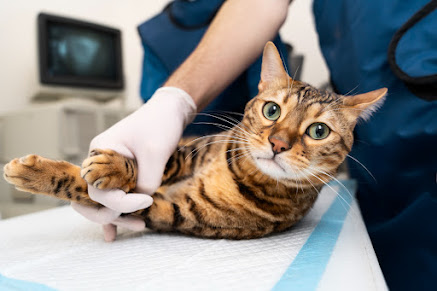
Cats are beloved companions to millions of people worldwide. Their graceful presence, independent nature, and affectionate behavior make them cherished members of our families. However, just like any other living being, cats are susceptible to various health issues, including upper respiratory infections (URIs). In this comprehensive article, we will explore the causes, symptoms, diagnosis, treatment, and prevention of feline upper respiratory infections, shedding light on this common ailment that affects cats of all ages and breeds.
Understanding Feline Upper Respiratory Infections:
Feline upper respiratory infections, also known as feline URI or cat flu, are highly contagious viral or bacterial infections that primarily affect the nose, throat, and sinus regions of cats. The most common causative agents include feline herpesvirus (FHV-1) and feline calicivirus (FCV). These infections can be transmitted through direct contact with infected cats or exposure to contaminated objects such as food bowls, bedding, or litter boxes.
Symptoms and Clinical Presentation:
Cats suffering from URIs display a range of symptoms, which may vary in severity depending on the causative agent and the overall health of the cat. Some common symptoms include:
Sneezing and nasal discharge: Cats with URIs often have persistent sneezing fits accompanied by a clear to thick, colored nasal discharge.
Congestion and coughing: Cats may exhibit signs of congestion, such as a stuffy or runny nose, and a persistent, dry cough.
Watery or red eyes: Inflamed and watery eyes, often accompanied by redness or discharge, are common in feline upper respiratory infections.
Decreased appetite and lethargy: Cats may lose their appetite due to a reduced sense of smell caused by congestion. Lethargy and decreased activity levels are also observed.
Ulcers or sores in the mouth: Some cats may develop painful oral ulcers or sores, particularly if the infection is caused by feline calicivirus.
Diagnosis and Veterinary Care:
If you suspect that your cat is suffering from an upper respiratory infection, it is crucial to seek veterinary care promptly. A veterinarian will conduct a thorough physical examination and may recommend additional diagnostic tests, including viral or bacterial swabs, blood work, or imaging studies, to confirm the diagnosis and rule out other potential causes.
Treatment Options:
Treatment for feline URIs typically focuses on managing the symptoms and providing supportive care. Your veterinarian may prescribe medications to alleviate congestion, reduce inflammation, and control secondary bacterial infections. In severe cases, hospitalization with intravenous fluids and nutrition may be necessary. It's important to follow your veterinarian's instructions carefully and complete the full course of prescribed medications.
Prevention and Management:
Preventing the transmission of feline upper respiratory infections is essential, particularly in multi-cat households or environments where cats frequently interact. Here are some preventive measures you can take:
Vaccination: Ensure that your cat's vaccinations, including those for feline herpesvirus and calicivirus, are up to date. Regular booster shots are necessary to maintain immunity.
Hygiene and sanitation: Practice good hygiene by washing your hands thoroughly before and after handling cats, especially if you have been in contact with an infected cat. Regularly clean and disinfect litter boxes, food and water bowls, and bedding.
Isolation of infected cats: If you have multiple cats and one is diagnosed with a URI, isolate the infected cat to prevent the spread of the infection to others.
Environmental management: Proper ventilation, regular cleaning of living areas, and minimizing stress can help boost the overall health of your cat's respiratory system.
Conclusion:
Feline upper respiratory infections are a common health concern among cats, causing discomfort and illness. By understanding the causes, symptoms, diagnosis, treatment, and prevention of URIs, cat owners can take proactive steps to ensure the well-being of their feline companions. Regular veterinary care, vaccination, hygiene practices, and a clean living environment are key to minimizing the risk of transmission and providing optimal care for cats affected by upper respiratory infections. With attentive management and timely intervention, cats can recover from URIs and continue to lead happy, healthy lives.





